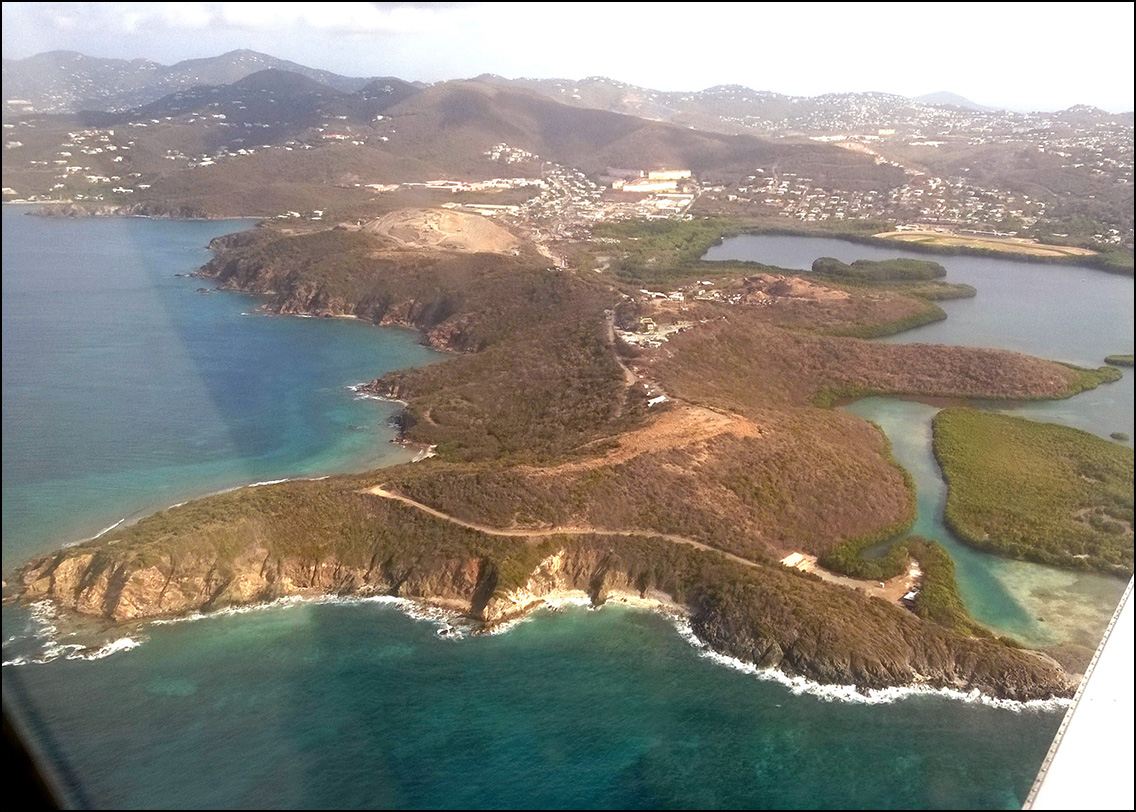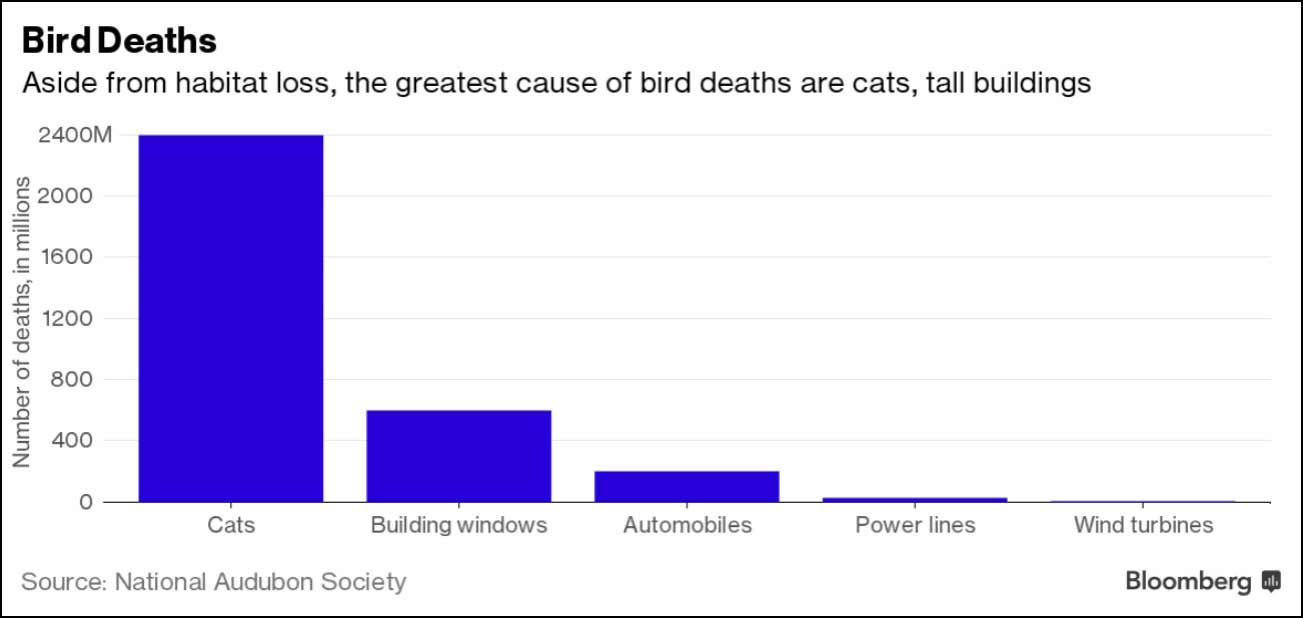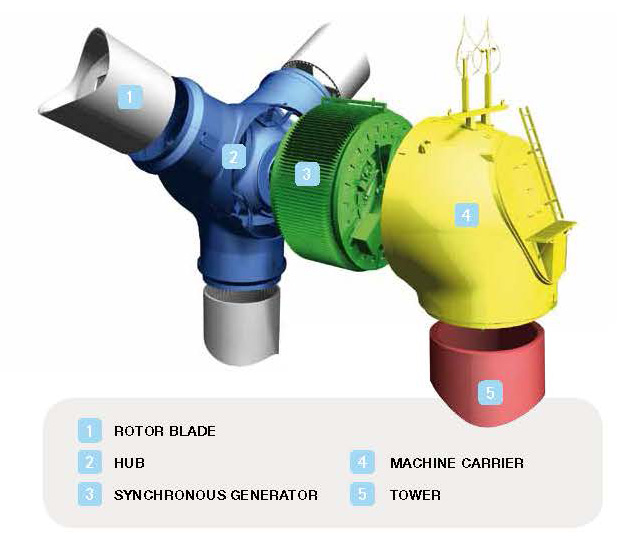Island Friendly 
Wind power has some of the lowest environmental impacts of any source of electricity generation. Unlike conventional sources, wind power significantly reduces carbon emissions, saves billions of gallons of water a year, and cuts pollution that creates smog and triggers asthma attacks. No significant environmental impact is anticipated, the wind turbines themselves will use clean wind to produce electrical power with no carbon or other greenhouse gas emissions. And no fossil fuel or water is required for power generation operations.

"Bovoni Point Peninsula Looking Northeast - Image by Advance Power"
Clean Renewable Energy 
Wind turbines have been around for hundreds of years. Originally they were used to pump water or to process grain. The wind turbines of today are used to generate electricity. When added to an existing power grid, they serve to offset existing power usage and protect the consumer from volatile market energy prices. Unlike the fluctuating value of finite fossil fuels, wind is limitless and will never run out. There is no byproduct to wind and the turbines physical footprint is small, making it one of the best ways to offset power and the harmful emissions of traditional fuels.
Reduced Emissions
Carbon
Wind power has some of the lowest environmental impacts of any commercial source of electricity generation. Industry wind when compared to conventional power generating sources, wind power significantly reduces carbon emissions, saves billions of gallons of water a year, and while reducing pollution.
Displacement of fossil fuels resulting from the Bovoni wind installation is expected to result in the reduction of 12,900 Tonnes of carbon (CO2) emissions annually. By some industry estimates a typical wind project repays its carbon footprint in six months or less, providing decades of zero-emission energy.
Sulfur Dioxide and Nitrogen Oxides
Wind also helps cut significant amounts of sulfur dioxide (SO2) and nitrogen oxides (NOx), air pollutants known for creating smog and triggering asthma attacks and other health issues. Reducing these pollutants helps to reduce rates of asthma and other respiratory issues. By some industry estimates these reductions in air pollution created $9.4 billion in public health savings in 2018 alone.
Displacement of Fossil Fuels
Reducing the number of barrels of oil reaching the island not only saves money, but also reduces the risk of an environmental disaster, and helps protect the vital tourism sector so important to the US Virgin Islands economy. Many things can go wrong in between transportation, ship to island transfer, and storage.
Replacing fossil fuels with wind dramatically decreases the chance for oil spills or other fuel transportation accidents, while at the same time providing for long-term savings through lower cost energy.
Annually the Bovoni wind project is estimated to "save" or "displace" approximately 17,653 barrels or 741,426 gallons of oil energy equivalent a year. Or put another way over a twenty-five (25) year period the total amount of oil energy equivalent saved is a whopping 441,325 barrels or 18,535,650 gallons!
This displaced oil or its fossil fuel equivalent which would never reach or have a chance to threaten the sensitive environment of the US Virgin Islands. All of this fossil fuel reduction of carbon emissions.
Wind is also the most cost effective renewable energy source. Just the Bovoni wind project can produce approximately 5% to 7% of the entire US Virgin Island annual needs, depending future consumption demands. When wind turbines are operated as part of a grid system primarily powered by fossil fuels, the displacement caused is nearly at a 1-1 rate. About 90%-95% of the fuel that would have been used is saved.
Water Conservation 
Wind is the most cost effective renewable energy source. Just 9.0 MW of wind power can reduce the fossil fuel consumption of the Virgin Islands by 5% to 7%. When wind turbines are operated as part of a grid system primarily powered by fossil fuels, the displacement caused is nearly at a 1 to 1 rate. About 90%-95% of the fossil fuel that would have been used is saved.
Industry wide wind energy also saves billions of gallons of water every year. Unlike thermal power plants, wind turbines require no water to produce electricity or cool power generating equipment. Older, conventional power plants (coal, natural gas, nuclear), use substantial amounts of water for cooling the plant. In fact, the power sector withdraws more water than any other sector in the U.S., including agriculture. That means the more wind power the country uses, the more water that can be conserved.

"Bovoni Point Peninsula Aerial Shot Looking Northeast - Courtesy of Paolo Bustreo"
Land Use
The proposed wind turbine installation will be placed at the furthest most south-southeastern portion of Bovoni Point, whose primary land use is industrial in nature and contains the primary landfill for the island of St. Thomas. The peninsula is comprised of approximately 350 acres, generally measured from Bovoni road to the southeastern most tip, as shown by the colored map below;

"Bovoni Point Peninsula Pink Shaded Area Depicts About 350 Acres - Image by Advance Power"
By comparison of this total acreage the actual area for Bovoni wind turbine installation is estimated to have a small footprint of less than fifteen percent (15%) of the total acreage of the peninsula. Unlike solar panel arrays, wind turbines do not need a large amount of space to operate and they provide kWh's of power at a cost effective rate.
The turbines at the Bovoni wind project site has footprints that are relatively small. The actual footprint for each individual tower foundation is extremely small on a per foot basis, in the range of 100 feet wide by 100 feet wide. As to the construction site, any surface disturbance will be returned to its native vegetative state.
And the majority of the site is for the most part readily assessable by service roads which already exist on the peninsula for other activities located on the peninsula, meaning less intrusion and disruption of existing topographical features.
Birds & Other Wildlife 
Wind power is far less harmful to wildlife than traditional energy sources it displaces — including to birds and their critical habitats. It is one of the only energy sources without population-level impacts, such as climate change-related habitat loss. Overall wind causes less than 0.01 percent of all human-related bird deaths.
Regardless of the form of energy generation no method is totally free from impact. However, research has shown the wind power’s impact to be the lowest. Wind turbines do not emit any air or water pollution, involves no mining or drilling for a source of fuel, uses no water in the generation of electricity, and creates no hazardous or radioactive waste requiring permanent storage.

"National Audubon Society Graph - Source: American Wind Energy Assoication"
Incidental losses at turbine sites will never be more than an extremely small fraction of bird deaths caused by human activities—an estimated 134,000-230,000 of the more than 5 billion small passerines in North America according to the most comprehensive analysis to date. Passerines are perching birds and most of them are small in size.
Other causes include buildings (550 million), power lines (130 million), cars (80 million), pesticide poisoning, (67 million, and radio and cell towers (6.8 million).
Even with its relatively low impacts, the wind industry is held to a higher standard and does more to study, avoid, minimize, and mitigate any wildlife impacts than any other industry. Resulting conservation programs by wind developers save habitat and help protect birds.
"You can’t be against renewable energy, wind and solar, if you are for protecting birds" ------ David O'Neill, chief conservation officer at the Audubon Society.
Avian mortality is a legitimate concern when building a wind installation, but according to NREL, for every 10,000 birds killed by human activities, less than one death is caused by a wind turbine. Birds are at greater risk with colliding with power lines than wind turbines. Most birds tend to avoid wind installations.
Besides cutting air pollution and reducing water use, wind farms have small footprints, allowing natural habitats and human economic activities to continue beneath them. It is estimated that the average wind installation leaves ninety-eight percent (98%) of the site location undisturbed, leaving the majority of the land available for wildlife and/or other uses. Various studies have shown that wind turbines have the lowest impact on wildlife and their surrounding habitats of any commercial-scale power generation facility.
Noise Mitigation 
Modern wind turbines are exceedingly quiet. The sound produced by an operating wind turbine (at 400 feet) is roughly 52db, which is comparable to the level of noise you would experience if you were to stand near an idling car. Noise produced by a wind turbine comes from a combination of the "swoosh' of the blades passing through the air and hum from the gearbox and generator. At the Bovoni wind project site because the wind turbines use direct drive technology the noise is reduced because the turbines do not use or employ gearboxes in the drivetrain.
Not only is the technology advancing in the design of the mechanical components such as simplifying the design and eliminating gearboxes, but the local ambient noise helps to dampen any remaining noise. While turbines of the past had loud moving parts, turbines of today have been drastically redesigned to remove as much unwanted noise as possible. The elimination of the gearbox drivetrain has been simplified to a direct drive system which reduces the number of moving parts. Structural design choices are also made to reduce the amount of vibration resonating through the rotor blades. The shape of the rotor blades is even designed to be aerodynamic, decreasing the white noise that wind generally makes. In conjunction with the redesigns, the distance turbines are put away from from civilization also reduces the noise pollution to practically zero.
Because Bovoni Point is an industrial use area and due to the remote location of the proposed wind turbine installation at the furthest portion of Bovoni Point, the nearest public road is approximately three-quarters of one mile away from the nearest wind turbine. In addition to the distance, the hilly terrain on the Bovoni Point also serves as a natural sound barrier, because of both the remoteness and the terrain, and given that wind turbine noise is normally negligible to begin with, any noise produced by the wind turbines will not be heard.
Low Profile Wind Turbines 
Due to the remote nature of the site the wind turbines are not near any residential homes, other housing; businesses or any other occupied structures. Shadow flicker from the turbines will not be a factor. Reducing visual clutter because the wind turbines will be on the outermost portion of Bovoni Point on a generally lower ridges relative to the topographical features directly to the northwest, and the wind turbines will be moderately obscured from public view from that direction.

"Wind Turbine Height Comparison Diagram - Courtesy of LEITWIND"
Wind turbines can handle tremendous and numerous types of wind loads, including straight and shear winds. Wind turbines also have cut-out speeds for self preservation purposes. As wind speeds near the maximum cut-out speeds the wind turbine is designed to shut down to avoid damage to the turbine. Wind turbines by their very nature are designed to be aerodynamic to handle sustained high winds. The low profile and re-enforced tubular steel turbine towers specially designed for the Bovoni wind project are extremely strong.
Logistics & Transportation 
The smaller size and significant technical advantages of the Leitwind LTW80 1.5 MW wind turbines allows for installations in difficult and remote locations like Bovoni Point. A specific logistic study and plan has been developed and tailored for the Bovoni Point site’s specific characteristics and grid requirements, and the LTW80s have great logistics and transportation advantages for the Bovoni site.

"LTW80 Primary Nacelle Components - Graphic Courtesy of LEITWIND"
The nacelle of the LTW80 has three distinct segments: hub assembly (rotor blade & hub), generator, and machine carrier. Because the nacelle module is segmented into individual pieces, each piece weighs less and is simpler to handle and transport. On site, they are individually lifted and assembled, one at time, on the towers. These smaller and lighter segments require smaller cranes.
All sections of the nacelle are movable through the existing port facilities on St. Thomas, and will be transported at night over existing roads to minimize disruption to the public. A comprehensive logistics and transport plan for the Bovoni wind project completely removes any need to disturb any sensitive coastal area regarding moving wind turbine components eliminating all potential risk to the Bovoni Point shoreline area.
"LEITWIND Transportation & Logistics Capabilities - Video Courtesy of LEITWIND"
Island Winds 
The US Virgin Islands has long been utilizing the Caribbean trade winds. Sailing has been a important part of the US Virgin history and culture. Along with past industries on the islands having used onshore wind mills to process sugar cane primarily used to make "Cruzan Rum".
Over history countless seafarer's sails have been pushed along by the winds, including th likes of Christopher Columbus in 1493. EvenCharles Lindbergh and his Spirit of St. Louis arrived and landed on St. Thomas in 1928 flying or "sailing" on the trade winds. The area formally known as "Mosquito Bay" where Lindbergh landed was eventually renamed to Lindbergh Bay Estate to memorialize the occasion.
Wind still has a role to play in powering the islands. Wind has played a role in the history of the Virgin Islands, but going forward wind can play a significantly much larger role in impacting and helping the islands transition away from fossil fuels based power generation. While at the same time wind can help the community achieve its stated energy goal of "60% Renewable Energy & Energy Efficiency By 2025".
The future of wind's role in providing renewable clean energy to the US Virgin Islands is now. Wind will continue to contribute to and play an even most important role in meeting the energy needs of the islands in the future.